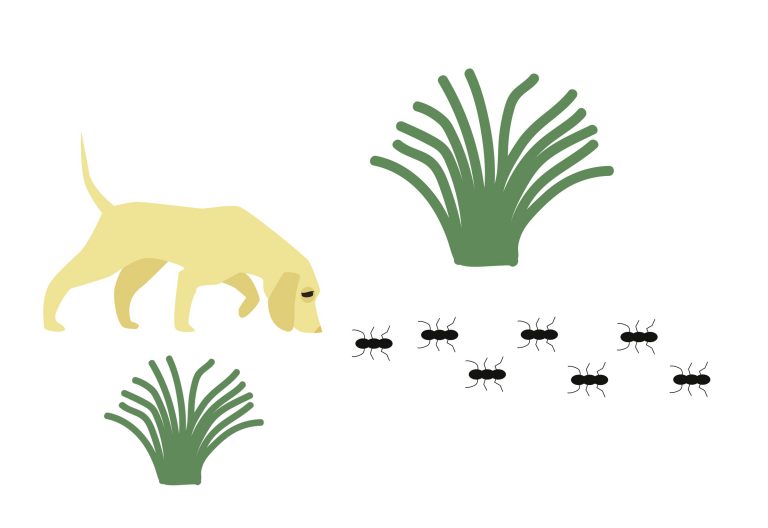
Carolina Watts
Staff Writer
A labrador retriever named Tobias is one of the lead conservationists fighting against a potentially-disastrous Argentine ant infestation on Santa Cruz island. This energetic 3 year old yellow lab is being used as a biocontrol by ecologists to eliminate the invasive ants in order to restore balance to the island’s fragile ecosystem.
The ants first appeared on the island in the 1960s. Since then, their presence has forced essential native species such as pollinating bees, spiders, and various other small insects off the island. Because of their negative impact on biodiversity, ecologists have been trying a variety of methods to eliminate the species.
So far, the elimination process has shown success, but the Argentine ants aren’t going out without a fight. Ecologists on the island have been dropping sugar water beads that contain diluted poison via helicopter, killing off a majority of the ants without doing much harm to other animals.
Only then does Tobias go into action, sniffing out any remaining ants by identifying their specific pheromone. It is essential that every single Argentine ant is exterminated to put a complete end to their reproduction patterns, but locating the remaining few ants is nearly impossible for humans.
A biocontrol, commonly defined as the use of living organisms to depress the population of a pest, is not usually a dog. Biocontrols are most often the natural enemies of an invasive species, which directly eliminates the invasive species from an environment.
Biocontrols can be very efficient, but trying to solve one problem with a biocontrol can often lead to more problems down the road. The introduction of yet another foreign, non-native species to an environment already suffering from such has the potential to upset the ecosystem even further.
Canines like Tobias, however, don’t work to directly control the invasive species and can work alongside human ecologists to reduce the potential harm that even a biocontrol can create. One group of biologists and ecologists recognized the benefits that dogs can have in the biocontrol world and started a nonprofit organization to continue exploration of success.
The nonprofit is called Working Dogs for Conservation, the same foundation that trained Tobias. Working Dogs for Conservation’s focus is to save dogs that have been sent to shelters because of their hyperactive tendencies. It turns out these type of dogs fit the conservation job description perfectly.
By harnessing their energy and keen senses, ecologists and biologists work with the dogs on projects concerning drug trafficking, aquatic species detection, invasive species eradication like the Santa Cruz island project, and more.
Working Dogs for Conservation is part of an $854,000 effort specifically to remove Argentine ants from Santa Cruz Island. The California Natural Resources Agency states the project is within scope, on time, within budget, and slated for completion at the end of this month.
After his job on Santa Cruz Island is complete, Tobias will travel to the Southern Channel Islands to continue his ant-sniffing on San Clemente Island, where another infestation of Argentine ants has appeared.










